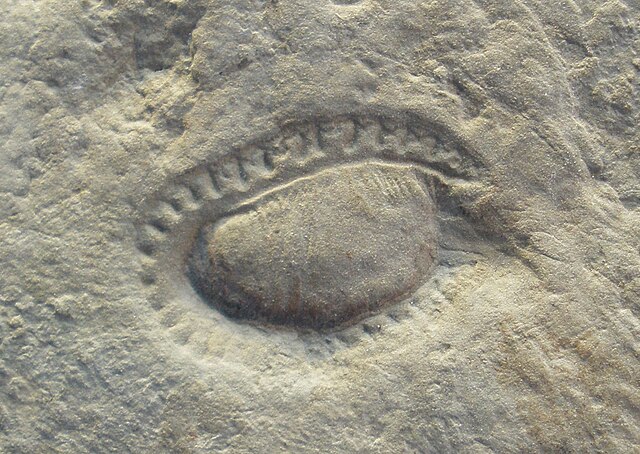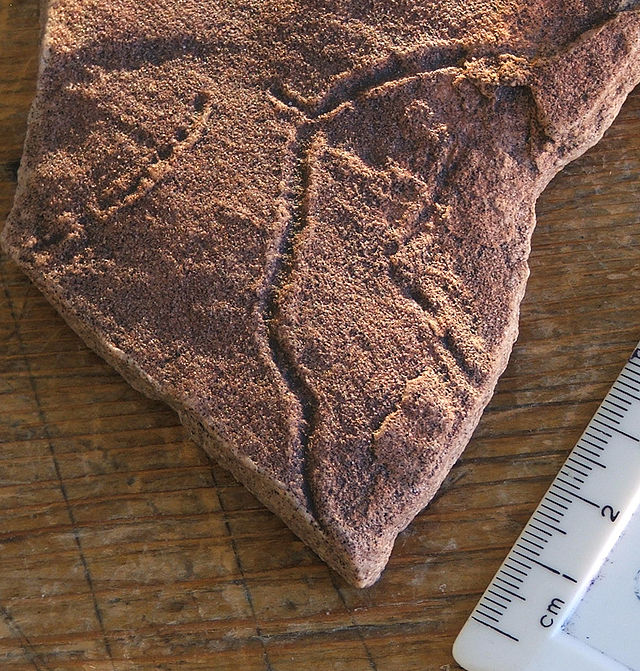Top Qs
Timeline
Chat
Perspective
Avalon explosion
Proposed evolutionary event in the history of metazoa, producing the Ediacaran biota From Wikipedia, the free encyclopedia
Remove ads
The Avalon explosion, named from the Precambrian faunal trace fossils discovered on the Avalon Peninsula in Newfoundland, eastern Canada, is a proposed evolutionary radiation of prehistoric animals about 575 million years ago in the Ediacaran period, with the Avalon explosion being one of three eras grouped in this time period.[3] This evolutionary event is believed to have occurred some 33 million years earlier than the Cambrian explosion, which had been long thought to be when complex life started on Earth.




Scientists are still unsure of the full extent behind the development of the Avalon explosion,[3] which resulted in a rapid increase in metazoan biodiversity, including the first appearance of some extant infrakingdoms/superphyla such as cnidarians and bilaterians. Many of the Avalon explosion animals are sessile soft-bodied organisms living in deep marine environments,[4] and the first stages of the Avalon explosion were observed through comparatively minimal species.[3]
Remove ads
History
Charles Darwin predicted a time of ecological growth before the Cambrian Period, but there was no evidence to support it until the Avalon explosion was proposed in 2008 by Virginia Tech paleontologists after analysis of the morphological space change in several Ediacaran assemblages.[3][4] The discovery suggests that the early evolution of animals may have involved more than one explosive event.[5] The original analysis has been the subject of dispute in the literature.[6][7][8]
Remove ads
Evidence
Trace fossils of these Avalon organisms have been found worldwide, with many found in Newfoundland, in Canada and the Charnwood Forest in England,[3] representing the earliest known complex multicellular organisms.[a] The Avalon explosion theoretically produced the Ediacaran biota.[4][3] The biota largely disappeared contemporaneously with the rapid increase in biodiversity known as the Cambrian explosion. At this time, all living animal groups were present in the Cambrian oceans.[3]
The Avalon explosion appears similar to the Cambrian explosion in the rapid increase in diversity of morphologies in a relatively small-time frame, followed by diversification within the established body plans,[3][9] a pattern similar to that observed in other evolutionary events.[9]
Remove ads
Fauna
The Avalon explosion was a time of early evolution and low diversity in species. There were over 270 species defined,[10] with 50 different morphological characteristics categories, many of whose anatomical structures had to be inferred with fossils and casts.[4][10] These species were placed into 20 different genera.[10]
During this time, animals became bilateral and increasingly complex.[9] Many animals during this time fit into the annelid, arthropod, echinoderm, and cnidarian phyla.[9] Animals at this time developed bilateral symmetry with a clear anterior and posterior side, which included species like Spriggina, Charniodiscus and Yorgia.[10]
Many of the superficially plant-like fossils fit into a now-extinct phylum of Vendobionta.[9] The Vendobionta were arranged (symmetry, body plan) in several ways, some radial, some parallel, some concentric.[11] Such "frondlets" were actually prominent animals during this time, with many different shapes, including Fractofusus, which had a spindle shape, Fradgatia, with a "lettuce" shape, and Rangea, which had a leaf-like shape.[9]
See also
- Cambrian explosion – Period of major evolutionary diversification of animal life
- Carboniferous-Earliest Permian Biodiversification Event – Evolutionary radiation of marine invertebrates
- Great Ordovician Biodiversification Event – Evolutionary radiation of marine animal life throughout the Ordovician period
Notes
References
Wikiwand - on
Seamless Wikipedia browsing. On steroids.
Remove ads
